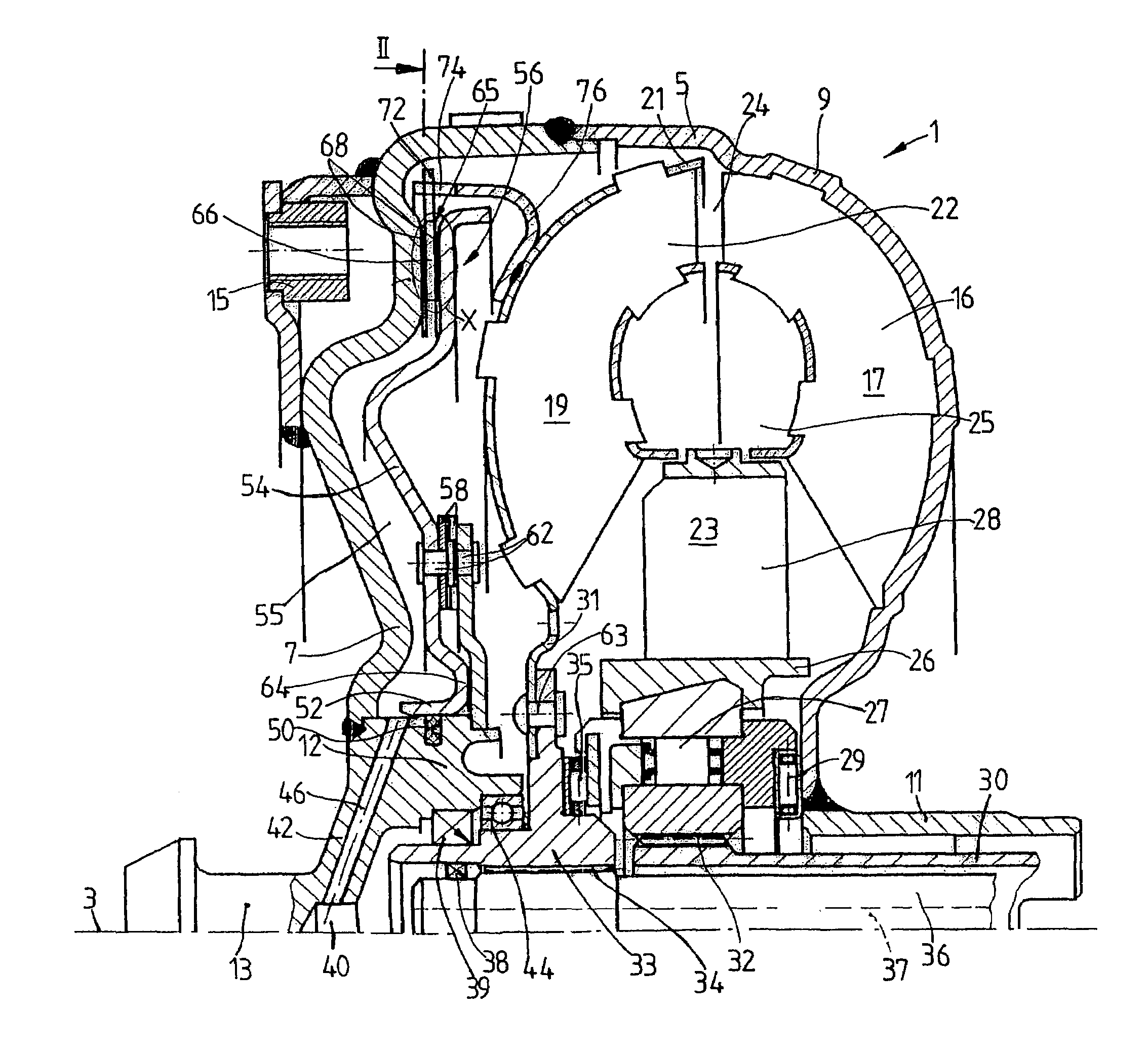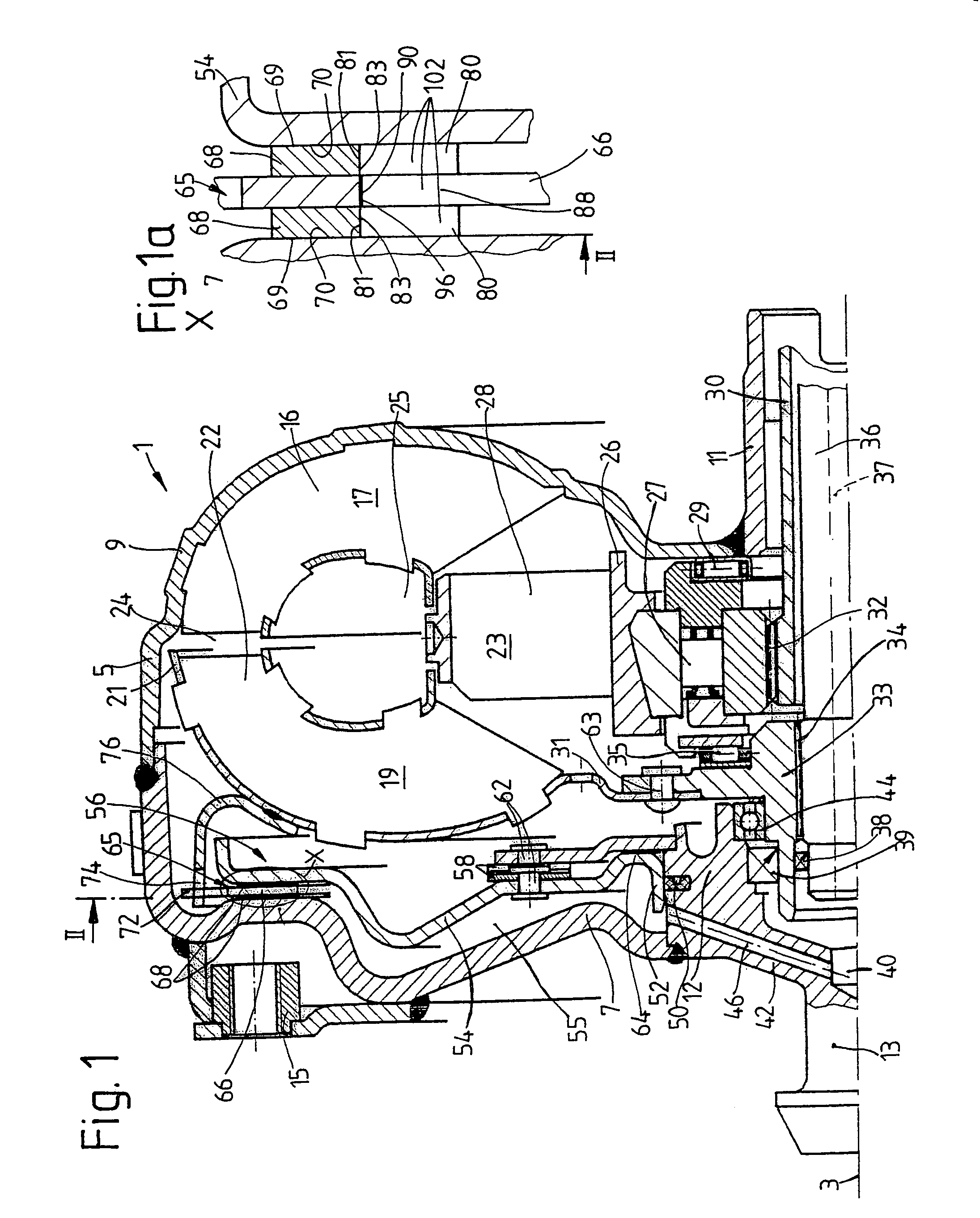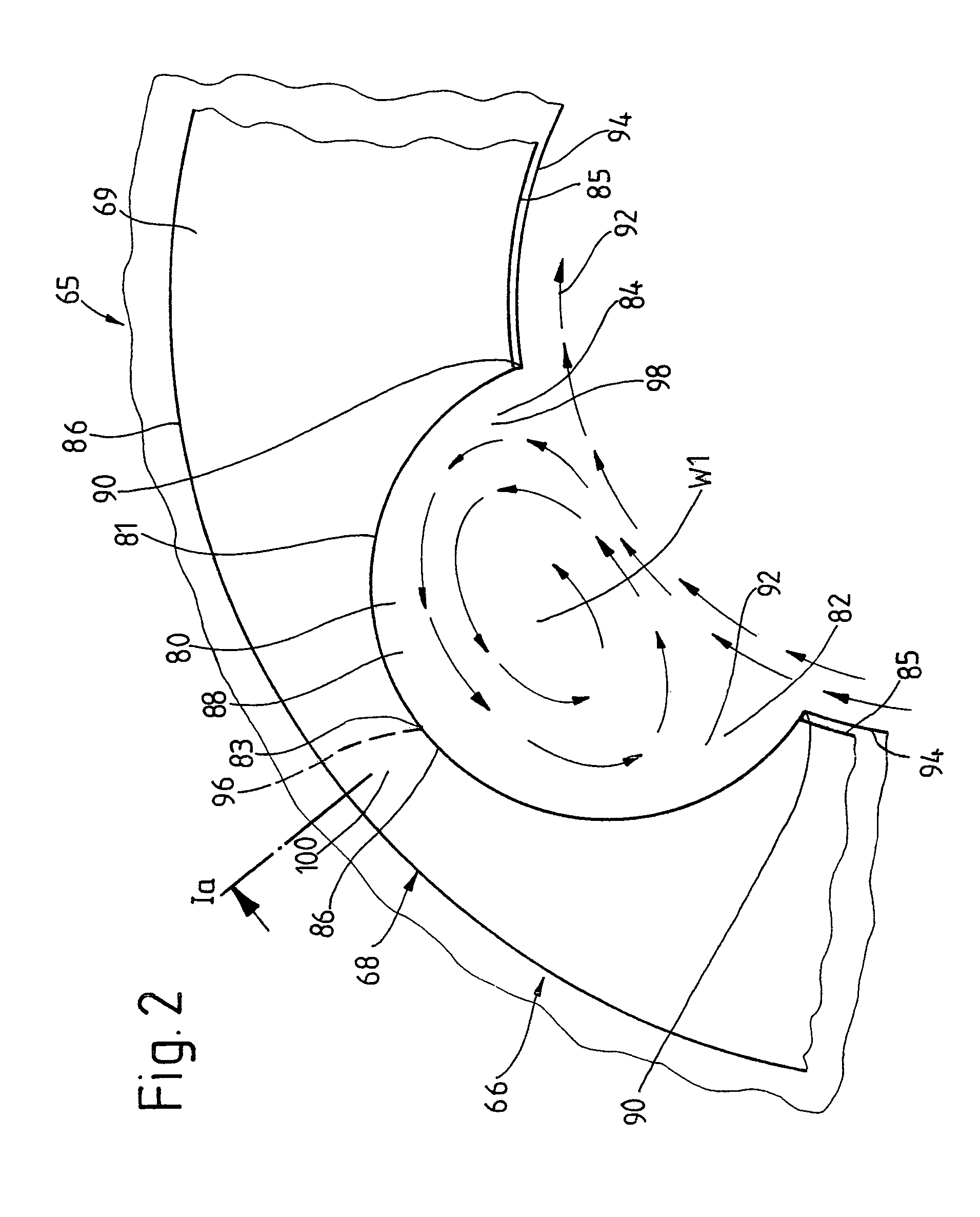Bridging clutch for a hydrodynamic torque converter
a technology of hydrodynamic torque converter and bridging clutch, which is applied in the direction of rotary clutches, fluid couplings, gearings, etc., can solve the problems of narrowing down the outflow area and the inability of cool transport mediums to enter the inflow area of the opening, and achieves a high degree of energy efficiency and high efficiency. effect of uniform cooling
- Summary
- Abstract
- Description
- Claims
- Application Information
AI Technical Summary
Benefits of technology
Problems solved by technology
Method used
Image
Examples
Embodiment Construction
[0023]FIG. 1 shows a hydrodynamic torque converter 1, which is able to rotate around an axis of rotation 3. The hydrodynamic torque converter 1 has a converter housing 5, which has a converter cover 7 on the side facing a drive unit (not shown), such as an internal combustion engine. This cover is permanently connected to a pump wheel shell 9. In the radially inner area, this shell merges into a pump wheel hub 11.
[0024]To return to the converter cover 7, its radially inner area is provided with a journal hub 12 carrying a bearing journal 13. The bearing journal 13 is mounted on an element of the drive unit, such as a crankshaft, to center the converter housing 5 on the drive unit side. The method used to mount the journal is known in and of itself and is therefore not described in any further detail. The converter cover 7 also has a mounting receptacle 15, which usually serves to attach the converter housing 5 to the drive unit preferably by means of a flexplate (not shown). See, fo...
PUM
 Login to View More
Login to View More Abstract
Description
Claims
Application Information
 Login to View More
Login to View More - R&D
- Intellectual Property
- Life Sciences
- Materials
- Tech Scout
- Unparalleled Data Quality
- Higher Quality Content
- 60% Fewer Hallucinations
Browse by: Latest US Patents, China's latest patents, Technical Efficacy Thesaurus, Application Domain, Technology Topic, Popular Technical Reports.
© 2025 PatSnap. All rights reserved.Legal|Privacy policy|Modern Slavery Act Transparency Statement|Sitemap|About US| Contact US: help@patsnap.com



